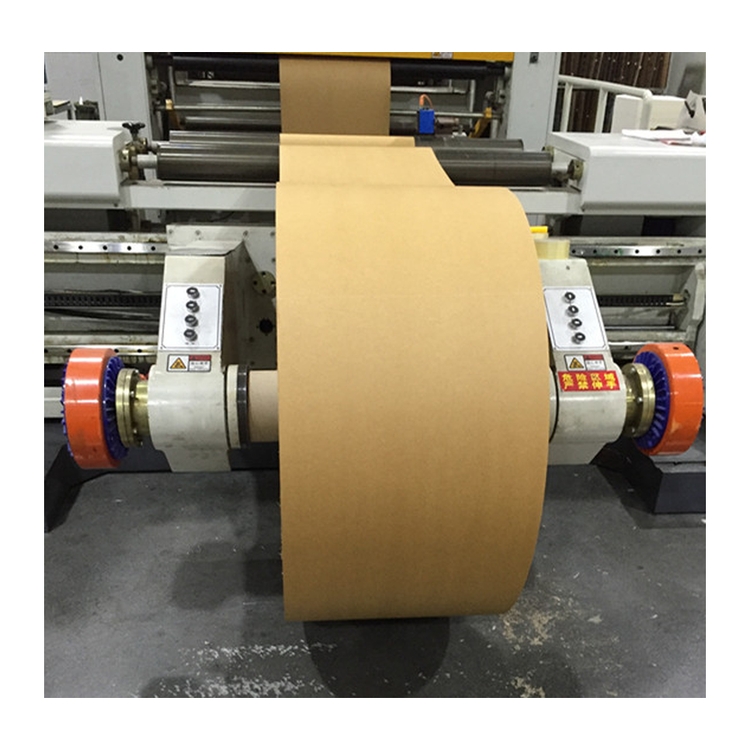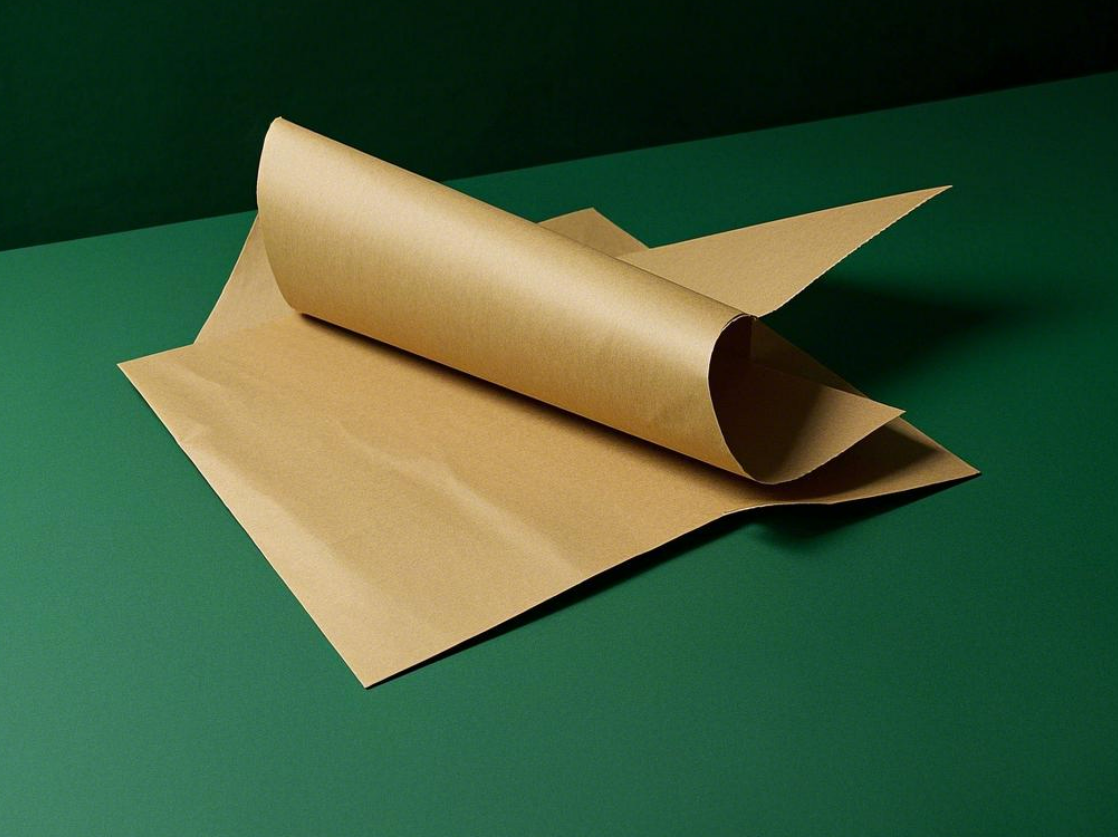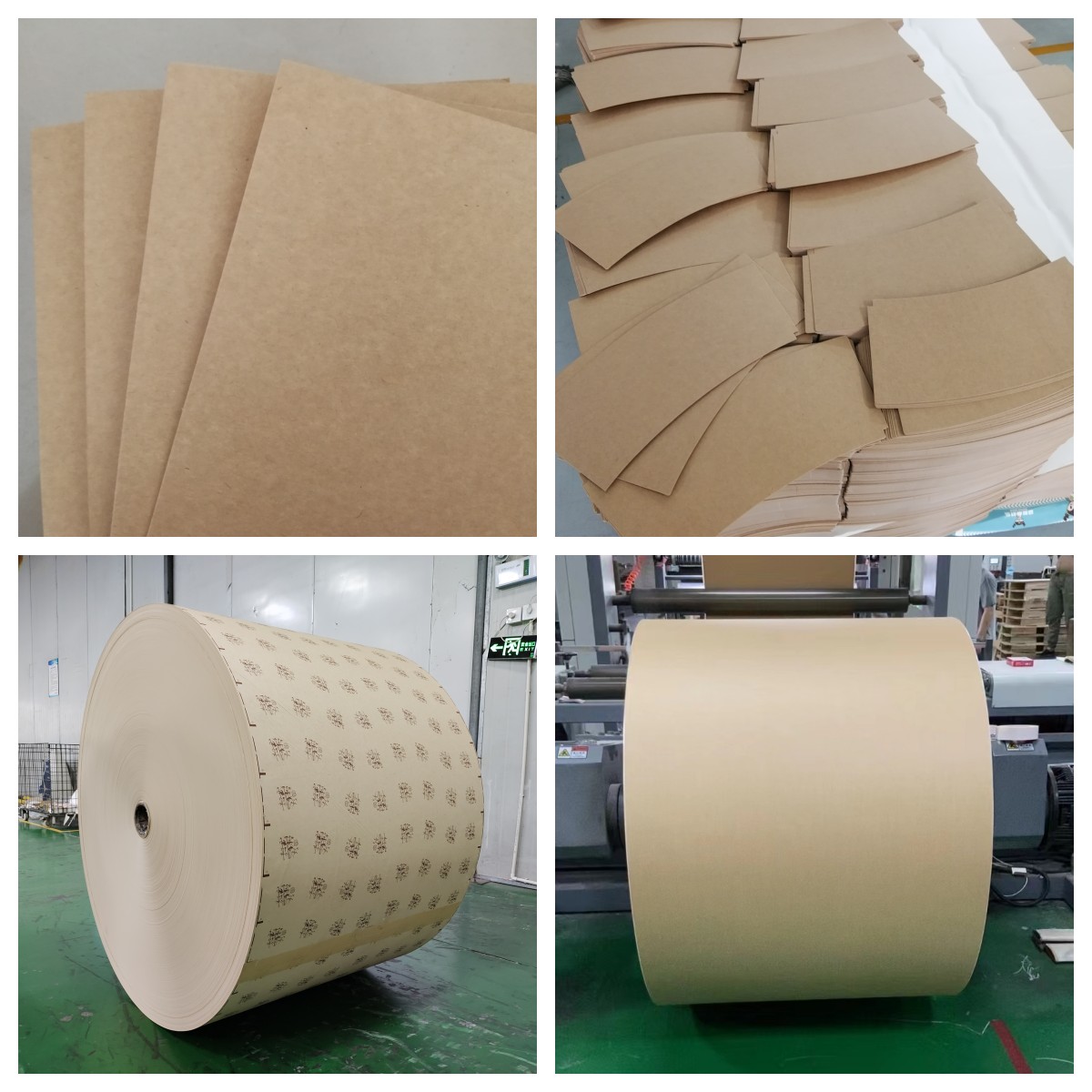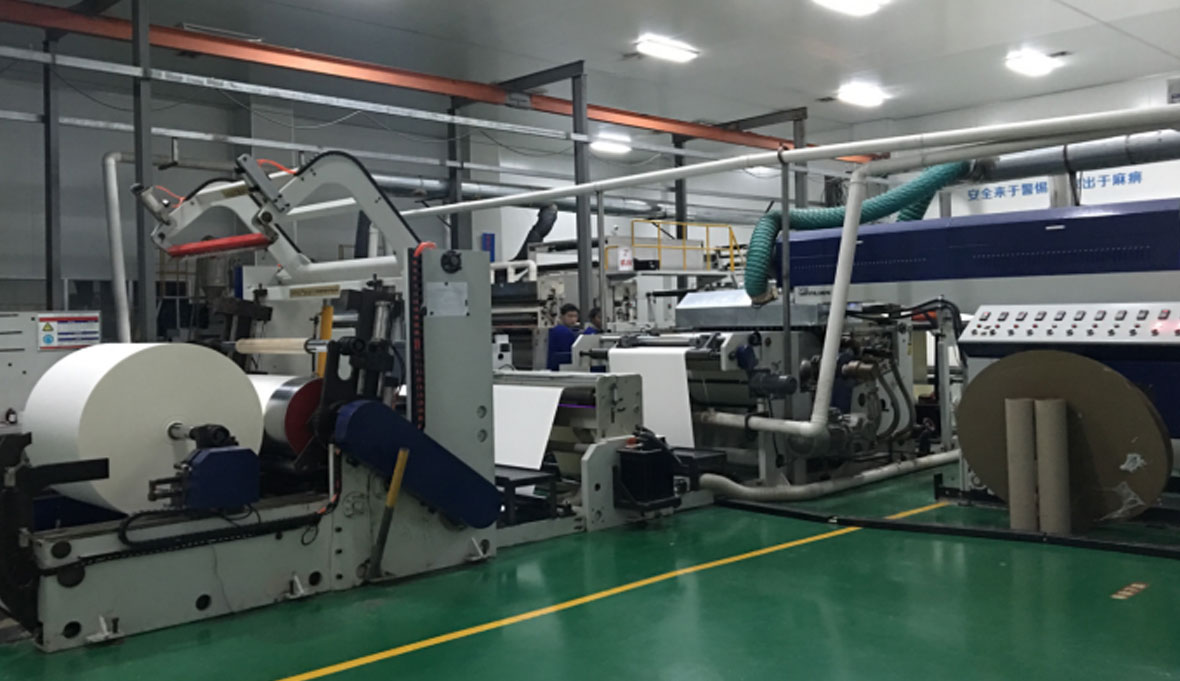
Kraft paper sheets are a popular choice in various industries due to their strength, flexibility, and eco-friendly properties. Whether you're using them for packaging, wrapping, or crafting, understanding what makes kraft paper sheets unique is essential.
In this comprehensive guide, we will explore the characteristics, types, and manufacturing process of kraft paper, while also highlighting the best applications for this versatile material. By the end, you'll have a deeper appreciation for kraft paper sheets and their numerous uses in the modern world.
What Are Kraft Paper Sheets?
Definition and Composition
Kraft paper sheets are durable and high-strength paper products made primarily from wood pulp through the kraft process. This process involves chemically treating wood fibers with sodium hydroxide and sodium sulfide, breaking down lignin and leaving behind strong cellulose fibers. The result is a paper with superior tear resistance and durability compared to other paper types. Depending on the application, kraft paper sheets can be made from virgin pulp or recycled fibers, with unbleached kraft paper retaining its natural brown color and bleached variants appearing white.
Key Characteristics
Strength: Kraft paper sheets have high tensile strength, making them resistant to tearing and punctures. This characteristic makes them ideal for packaging and heavy-duty wrapping applications.
Durability: Due to their long cellulose fibers, kraft paper sheets are more robust than standard paper, allowing them to withstand rough handling and extreme conditions.
Flexibility: Despite their strength, kraft paper sheets remain flexible, enabling easy folding, wrapping, and shaping for various applications such as bags, pouches, and protective covers.
Porosity: Kraft paper sheets have a higher porosity compared to coated papers, making them ideal for applications that require breathability, such as food packaging.
Eco-Friendliness: Made from sustainable sources, kraft paper sheets are biodegradable, compostable, and recyclable, making them a preferred choice for businesses seeking environmentally friendly packaging solutions.

Differences Between Kraft Paper and Other Types of Paper
Compared to Standard Paper: Kraft paper sheets have longer and stronger fibers, giving them superior durability. Standard paper, such as copier paper, is typically weaker and designed for writing or printing rather than packaging.
Compared to Cardstock: While cardstock is thicker and more rigid, kraft paper sheets offer greater flexibility and tear resistance, making them suitable for wrapping and cushioning applications.
Compared to Corrugated Paper: Corrugated paper includes multiple layers with a fluted structure for additional strength, whereas kraft paper sheets are single-layered but still highly durable. Kraft paper is often used as an outer layer in corrugated packaging for added toughness.
Compared to Parchment Paper: Parchment paper is chemically treated to be non-stick and heat-resistant, making it ideal for baking, while kraft paper sheets are more absorbent and commonly used in packaging and industrial applications.
Kraft paper sheets stand out due to their strength, flexibility, and eco-friendly nature, making them indispensable in various industries, from packaging and shipping to crafting and food wrapping.
How Kraft Paper Sheets Are Made
Raw Materials: Wood Pulp and Recycled Fibers
Kraft paper sheets are primarily made from softwood trees such as pine and spruce, which contain long cellulose fibers that enhance paper strength. The manufacturing process begins with wood pulp, sourced either from virgin wood or recycled paper materials. Virgin pulp offers maximum durability and consistency, while recycled fibers make kraft paper sheets a more sustainable choice. The balance between these materials depends on the intended use—industrial-grade kraft paper typically relies more on virgin pulp, whereas eco-friendly options incorporate a higher percentage of recycled fibers.
Kraft Pulping Process: Sulfate Process Overview
The kraft process, also known as the sulfate process, is the dominant method for producing kraft paper sheets due to its efficiency in breaking down lignin while preserving strong cellulose fibers. The steps include:
Cooking: Wood chips are mixed with a chemical solution of sodium hydroxide (NaOH) and sodium sulfide (Na₂S) in a high-pressure digester. This breaks down lignin, the glue-like substance binding fibers together, leaving behind a strong fibrous pulp.
Washing and Screening: The pulp is washed to remove residual chemicals and screened to separate usable fibers from unwanted particles.
Bleaching (if required): For bleached kraft paper sheets, additional chemical treatments remove remaining lignin and whiten the paper.
Drying and Rolling: The processed pulp is spread into thin sheets, pressed to remove excess moisture, and dried before being rolled into large reels for further processing.
This sulfate process not only enhances the durability of kraft paper sheets but also allows for the recovery and reuse of chemicals, making it a more sustainable method compared to traditional pulping techniques.

Kraft Paper RollsProduced By Sunrise Paper
Bleached vs. Unbleached Kraft Paper
To better understand the differences between bleached and unbleached kraft paper sheets, the following table highlights key characteristics:
| Feature | Unbleached Kraft Paper | Bleached Kraft Paper |
| Color | Natural brown | White or light-colored |
| Strength | Highest strength due to minimal processing | Slightly weaker due to lignin removal |
| Surface | Rougher texture | Smoother surface, better for printing |
| Chemical Treatment | Minimal chemical processing | Undergoes bleaching process to remove lignin |
| Typical Uses | Packaging, wrapping, industrial applications | Printing, branding, food-safe packaging |
Finishing Options: Coated vs. Uncoated Kraft Paper
Uncoated Kraft Paper: The most natural form of kraft paper sheets, offering high absorbency, breathability, and biodegradability. It is commonly used for eco-friendly packaging, grocery bags, and void-fill applications.
Coated Kraft Paper: Features additional layers such as polyethylene (PE), wax, or silicone to enhance moisture resistance, grease resistance, or printability. Coated kraft paper sheets are widely used in food packaging, industrial wrapping, and moisture-sensitive applications.
Types of Kraft Paper Sheets
Unbleached Kraft Paper: Natural Brown, High Strength
Unbleached kraft paper sheets retain their natural brown color due to minimal chemical processing, preserving the strength of the long cellulose fibers. Known for their high tear resistance and durability, these kraft paper sheets are widely used in packaging, wrapping, and industrial applications where strength is a priority. Their rough texture and high porosity make them ideal for protective layers in shipping, void-fill materials, and heavy-duty paper bags.
Bleached Kraft Paper: White Kraft, Smoother Surface
Bleached kraft paper sheets undergo additional processing to remove lignin, resulting in a white or light-colored appearance. While slightly less strong than unbleached variants, bleached kraft paper offers a smoother and more refined surface, making it an excellent choice for printing, branding, and food-safe packaging. Common applications include premium shopping bags, branded wrapping paper, and food-grade liners where cleanliness and aesthetic appeal are important.
Coated Kraft Paper: Waxed, PE-Coated, Laminated for Extra Durability
Coated kraft paper sheets feature additional protective layers that enhance their moisture resistance, grease resistance, or printability:
Waxed kraft paper: Infused with wax to create a water-resistant barrier, often used in food wrapping and industrial packaging.
PE-coated kraft paper: A layer of polyethylene (PE) provides extra strength and resistance against oil, grease, and moisture, making it ideal for food trays, butcher wraps, and medical packaging.
Laminated kraft paper: Reinforced with a thin plastic or aluminum layer to enhance durability and barrier properties, commonly used for heavy-duty wrapping and moisture-sensitive products.
Printed Kraft Paper: Custom Branding and Logos
Printed kraft paper sheets are designed for businesses seeking customized packaging solutions. Using flexographic or digital printing techniques, companies can add logos, branding elements, and decorative designs directly onto kraft paper surfaces. These sheets are popular in retail packaging, branded wrapping paper, and promotional materials, offering both eco-friendliness and a distinctive visual appeal.
Recycled Kraft Paper: Sustainable and Eco-Friendly Options
Recycled kraft paper sheets are made from post-consumer or post-industrial recycled fibers, reducing the environmental impact of paper production. While they may have a slightly rougher texture and lower strength compared to virgin kraft paper, they remain a preferred choice for businesses aiming to minimize waste and promote sustainability. Common applications include eco-friendly packaging, paper bags, and mailing envelopes.
Common Applications of Kraft Paper Sheets
Packaging Industry: Boxes, Bags, and Wrapping
Kraft paper sheets are widely used in the packaging industry due to their strength, versatility, and eco-friendly properties. Their high tear resistance and durability make them ideal for:
Corrugated kraft paper boxes: Frequently used for shipping and product packaging, providing excellent protection while being lightweight.
Kraft paper bags: Popular in retail, grocery, and food industries as a sustainable alternative to plastic bags.
Protective wrapping: Used to wrap fragile items, furniture, and industrial goods to prevent scratches and damage during storage and transportation.
E-Commerce and Shipping: Void Fill, Protective Wrapping
Kraft paper sheets play an essential role in the e-commerce and logistics sector, ensuring that products reach customers safely. They are used for:
Void fill material: Crumpled kraft paper is inserted into shipping boxes to prevent items from shifting during transit.
Protective wrapping: Delicate goods such as ceramics, electronics, and glassware are wrapped in kraft paper sheets for cushioning.
Mailer envelopes: Kraft paper-based padded envelopes provide a sturdy and biodegradable alternative to plastic bubble mailers.
Food Industry: Food-Safe Packaging and Wrapping Solutions
Kraft paper sheets are widely used in the food industry, especially when treated with grease-resistant or moisture-resistant coatings. They serve various purposes, including:
Fast-food wrapping: Used for burgers, sandwiches, and baked goods, ensuring hygiene while maintaining eco-friendliness.
Takeout packaging: Many restaurants use kraft paper containers and bags for an environmentally friendly alternative to plastic.
Butcher paper: A thicker kraft paper variant used for wrapping fresh meat, allowing breathability while preserving quality.
Construction and Industrial Use: Insulation, Protective Layers
Kraft paper sheets provide functional benefits in construction and industrial applications due to their durability and resistance to wear. Key uses include:
Insulation backing: Used as a facing material for fiberglass insulation to act as a moisture barrier.
Surface protection: Laid over floors, countertops, and furniture during renovations to shield against dust, scratches, and paint spills.
Industrial wrapping: Heavy-duty kraft paper sheets are used to wrap metal components, automotive parts, and machinery to protect against corrosion and damage.
Arts, Crafts, and Stationery: Scrapbooking, Invitations, and DIY Projects
Kraft paper sheets are a favorite material for creative projects due to their rustic, natural aesthetic and easy customization. Common applications include:
Scrapbooking and journaling: The textured brown paper adds a vintage touch to handmade journals and photo albums.
DIY invitations and greeting cards: Kraft paper sheets are used for wedding invitations, thank-you cards, and handmade stationery.
Gift wrapping and decorations: Kraft paper provides a minimalist yet elegant wrapping option, often paired with twine, stamps, or dried flowers for personalization.

Choosing the Right Kraft Paper Sheets
Selecting the appropriate kraft paper sheets depends on various factors, including thickness, coating, printing compatibility, and sustainability. Understanding these aspects ensures that the chosen material meets specific application needs, whether for packaging, printing, or industrial use.
Thickness and GSM (Grams per Square Meter): How to Select the Right Weight
The thickness of kraft paper sheets is measured in GSM, which determines their strength and durability. Choosing the right GSM depends on the intended application:
40-60 GSM: Lightweight and flexible, suitable for wrapping, tissue paper alternatives, and arts and crafts.
70-100 GSM: Commonly used for kraft paper bags, envelopes, and food wrapping.
120-200 GSM: Ideal for sturdy packaging, protective wrapping, and premium stationery applications.
Above 200 GSM: Heavy-duty kraft paper, used for industrial wrapping, box liners, and construction applications.
Coating and Treatment Options: Waxed, PE-Coated, Laminated, etc.
Different coatings and treatments enhance the functionality of kraft paper sheets, making them suitable for specific industries:
Waxed kraft paper: Impregnated with wax for moisture resistance, often used in food wrapping and industrial packaging.
PE-coated kraft paper: Features a polyethylene layer that enhances water resistance, commonly used for food packaging and protective wraps.
Laminated kraft paper: Reinforced with additional layers for increased strength and durability, ideal for heavy-duty industrial applications.
Greaseproof kraft paper: Specially treated to resist oil and grease, used extensively in food service industries.
Printing Compatibility: Best Options for Branding and Custom Printing
When using kraft paper sheets for branding, selecting the right printing method is crucial to achieving high-quality results:
Flexographic printing: A cost-effective method for large-volume packaging applications, suitable for kraft paper bags and boxes.
Offset printing: Produces sharp and high-resolution graphics, ideal for premium stationery and branded wrapping paper.
Screen printing: Works well for bold designs and smaller print runs, commonly used for artisanal and eco-friendly branding.
Digital printing: Best for short-run custom prints with detailed graphics and variable data.
Sustainability Considerations: FSC-Certified, Recycled vs. Virgin Kraft Paper
Sustainability is a key factor when selecting kraft paper sheets, especially for businesses looking to reduce their environmental impact:
FSC-certified kraft paper: Sourced from responsibly managed forests, ensuring ethical and sustainable production.
Recycled kraft paper: Made from post-consumer or post-industrial waste, reducing landfill waste and lowering carbon footprint.
Virgin kraft paper: Manufactured from fresh wood pulp, offering superior strength and durability but requiring more natural resources.
Conclusion
Kraft paper sheets are a versatile and eco-friendly material widely used across various industries. Their strength, durability, and flexibility make them ideal for packaging, food wrapping, and industrial applications. Whether unbleached for high strength or bleached for a smoother surface, these papers cater to a range of needs, from sustainable packaging to custom branding. By understanding the types and characteristics of kraft paper, you can make more informed choices to meet specific requirements, ensuring both functionality and environmental responsibility in your projects. What’s your next application for kraft paper?


























